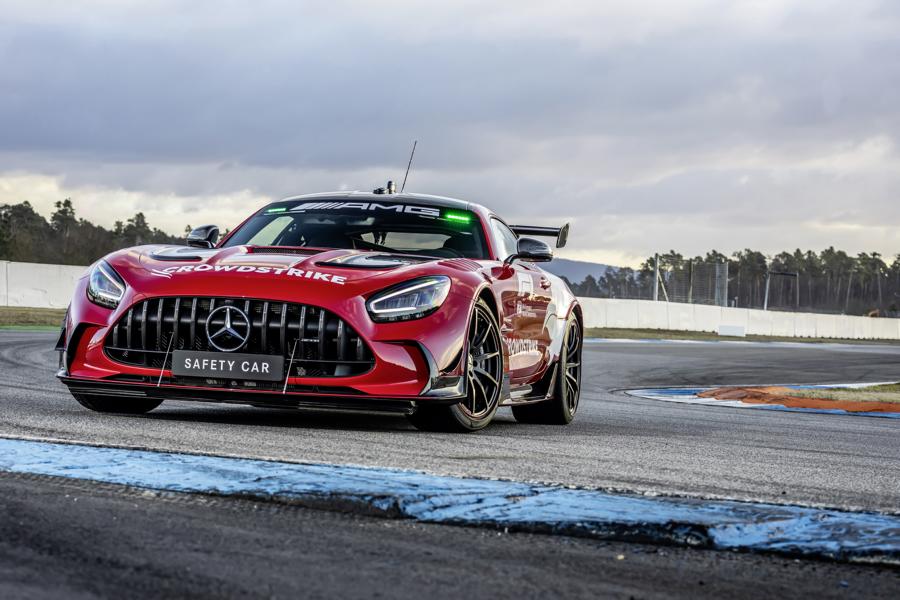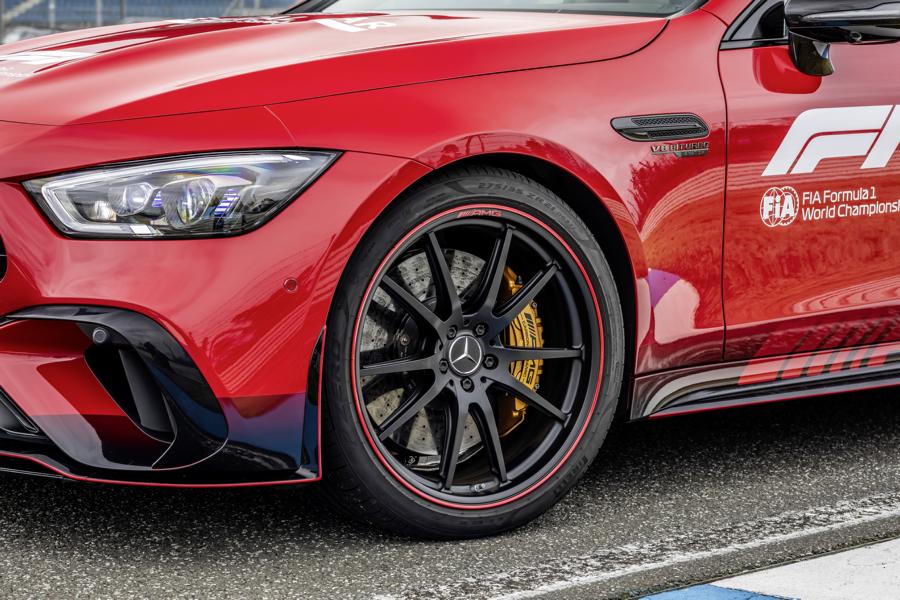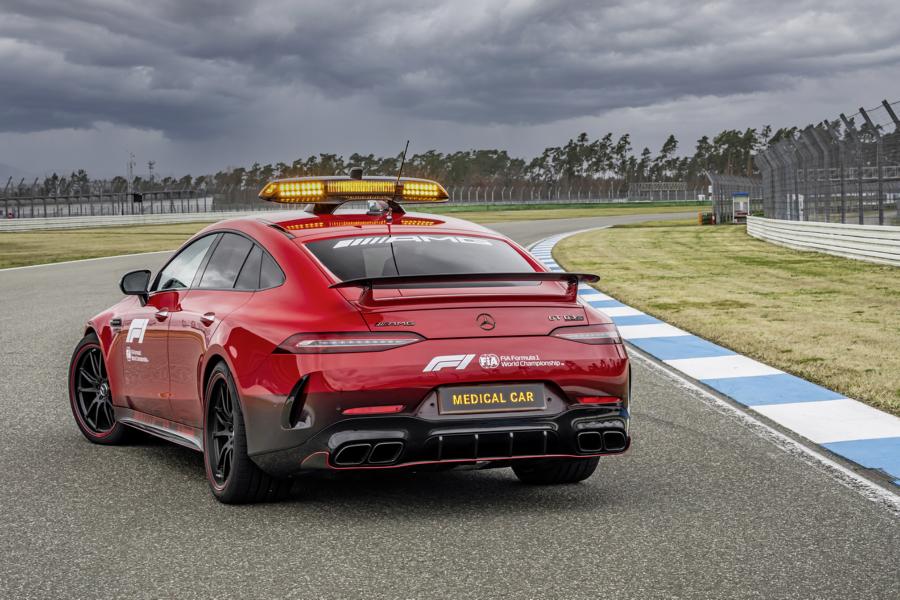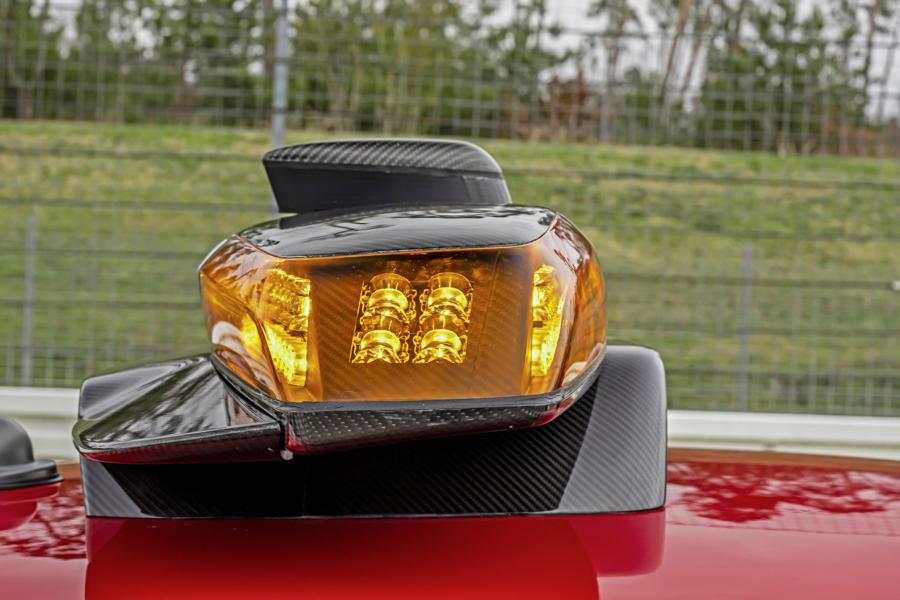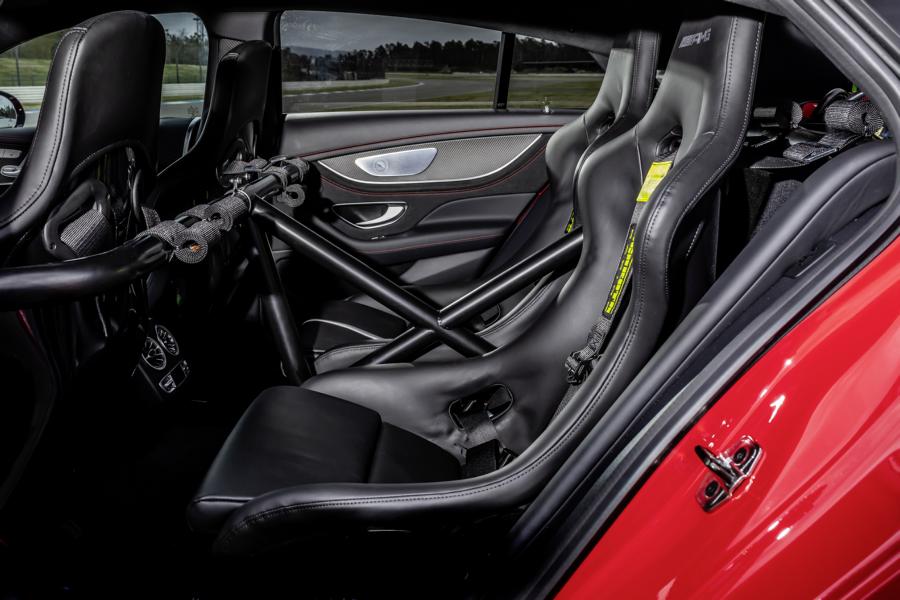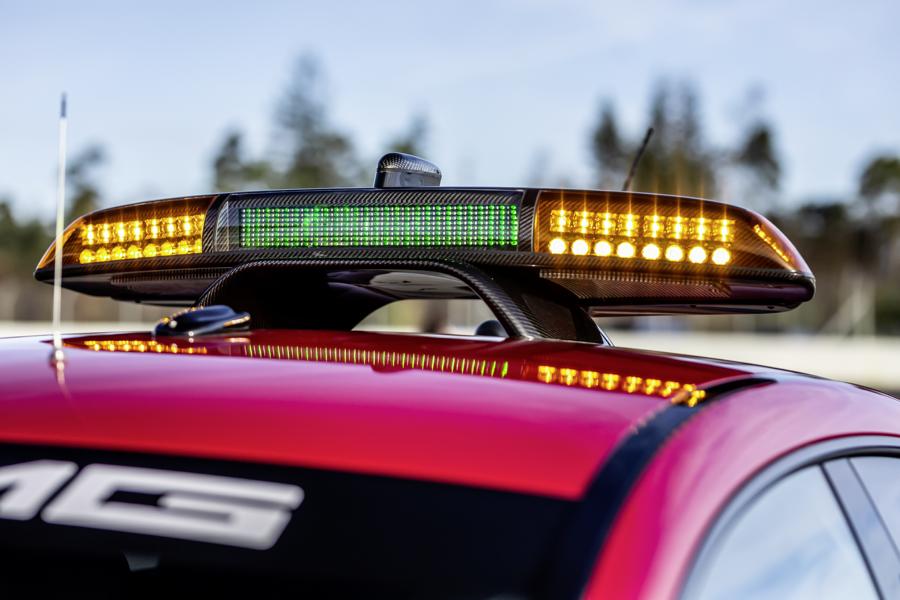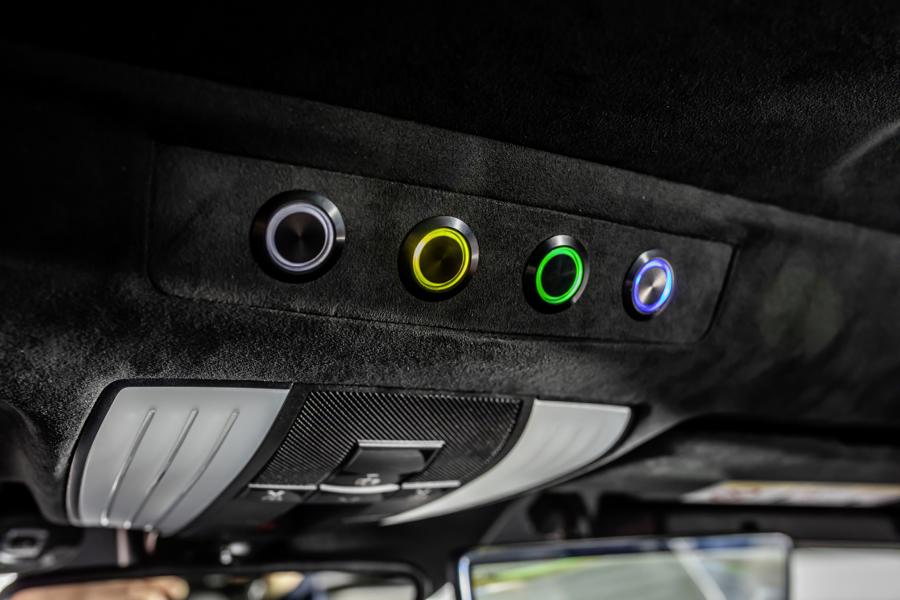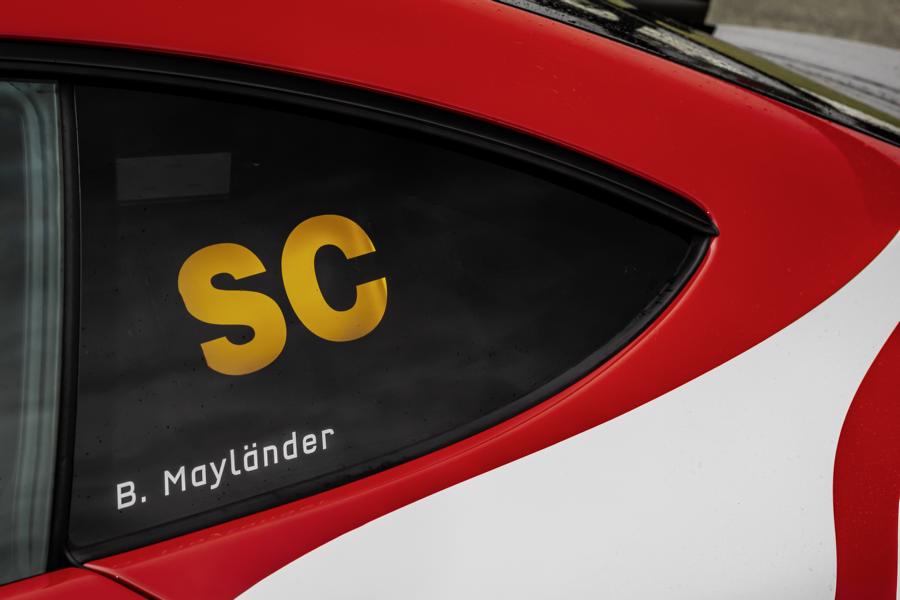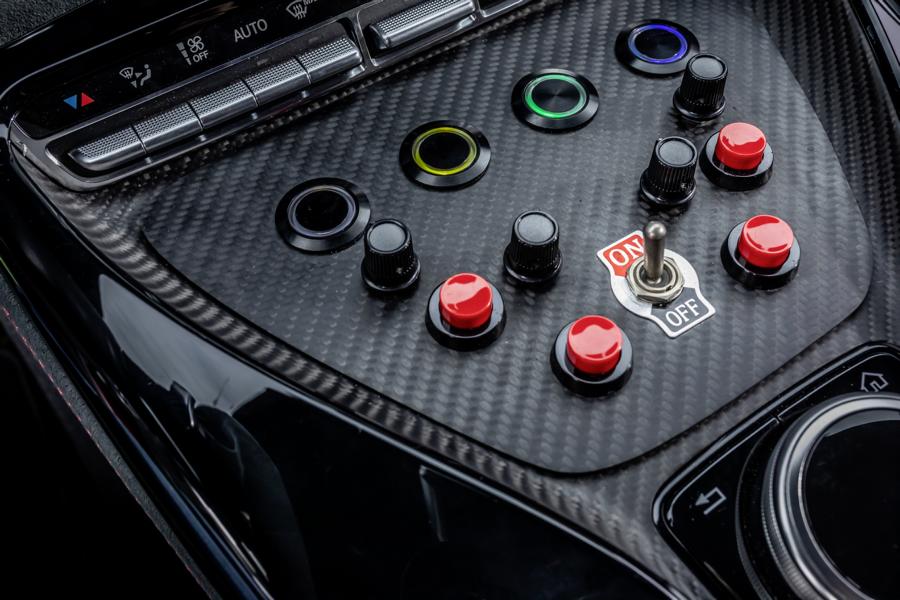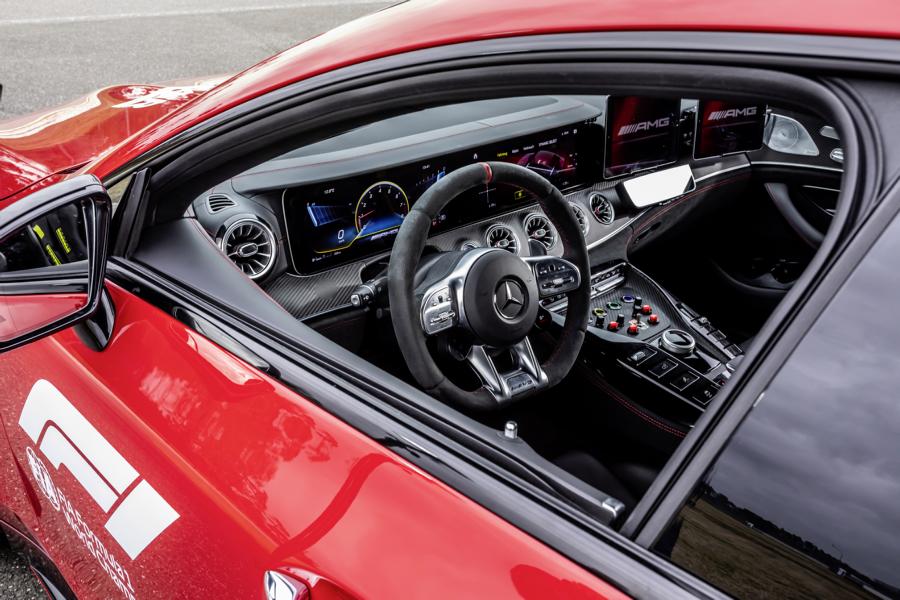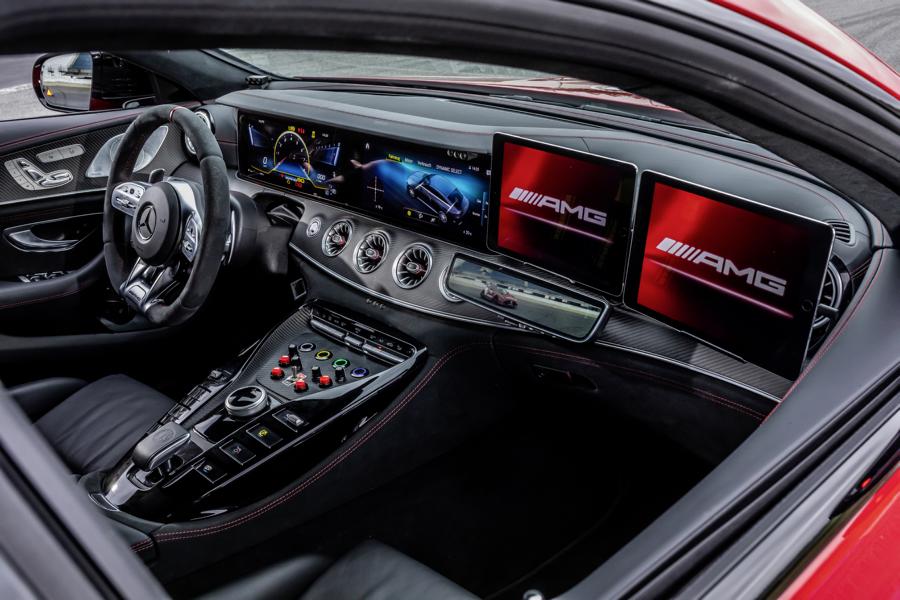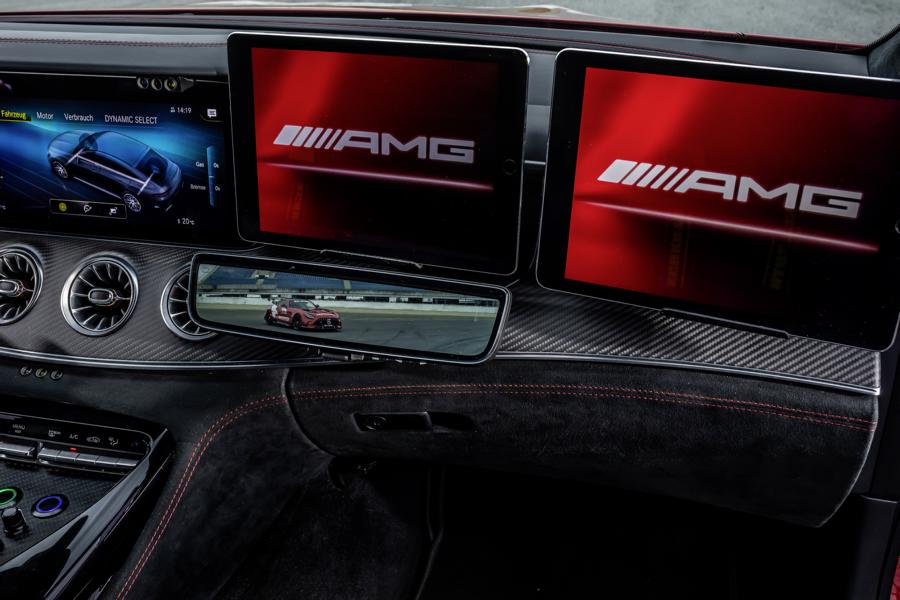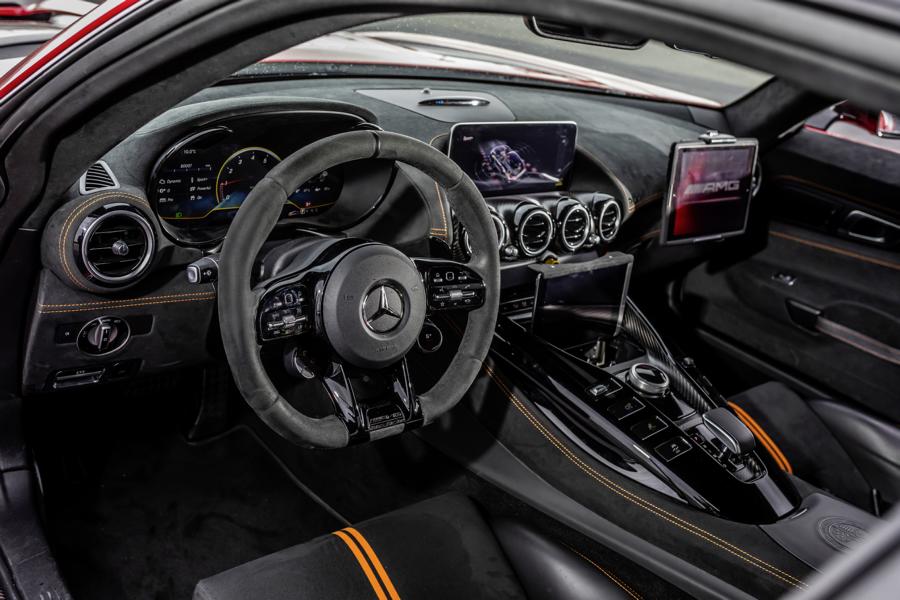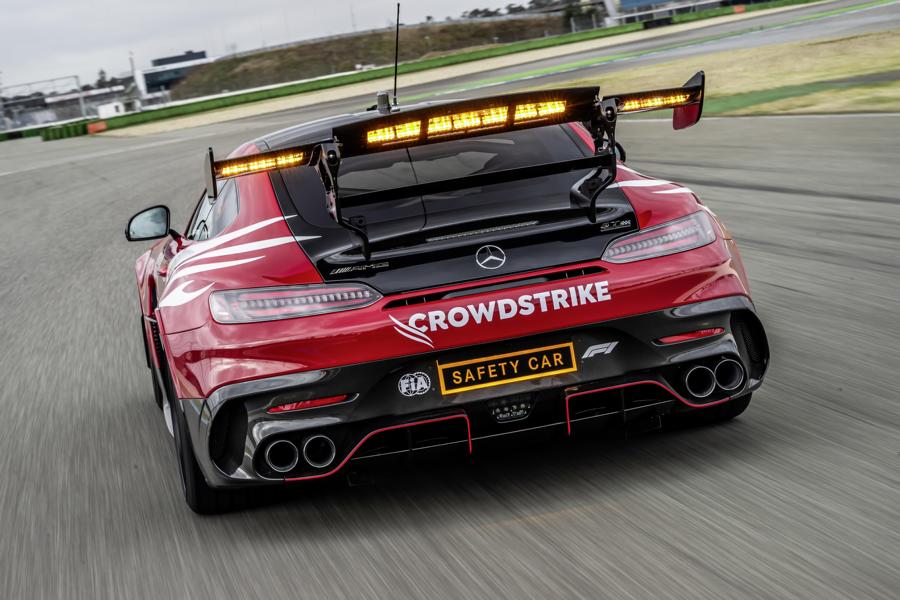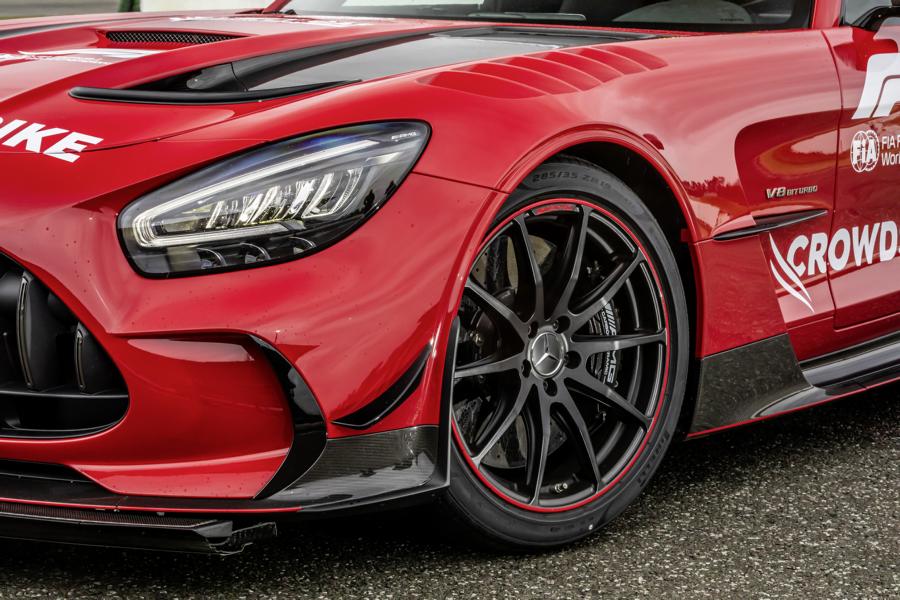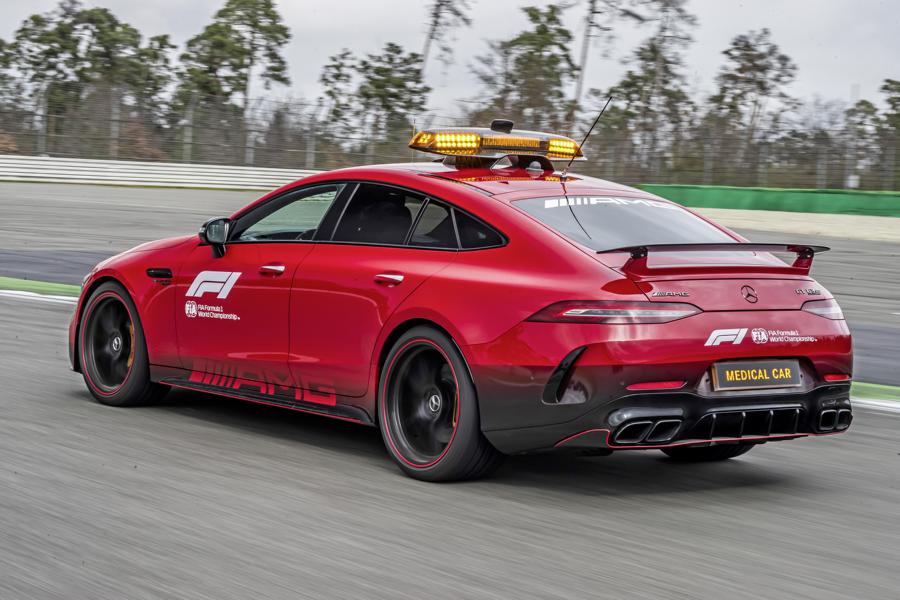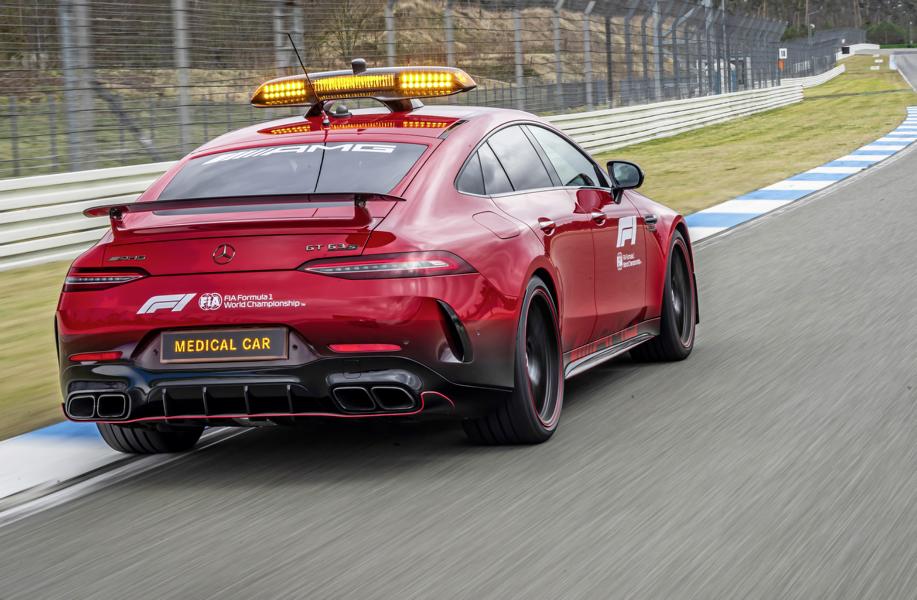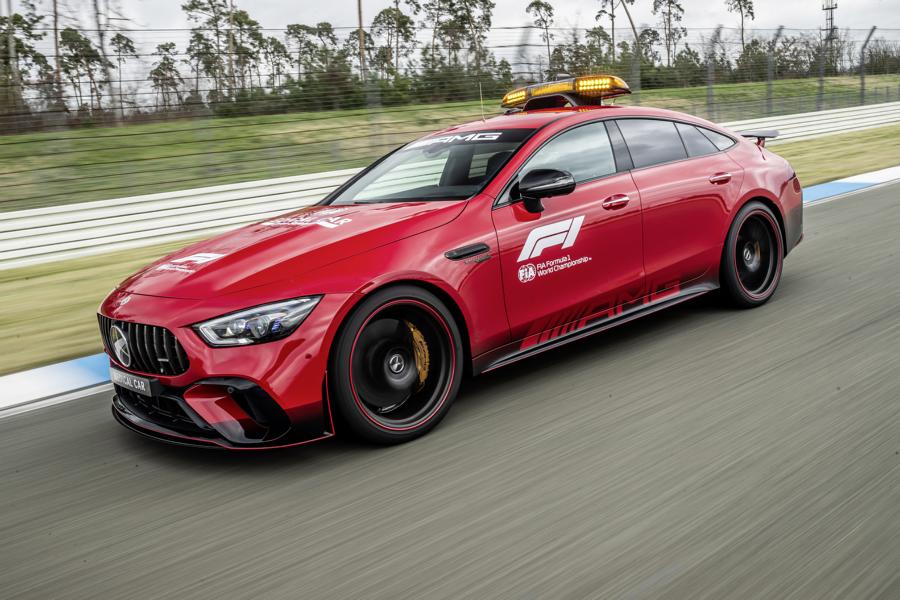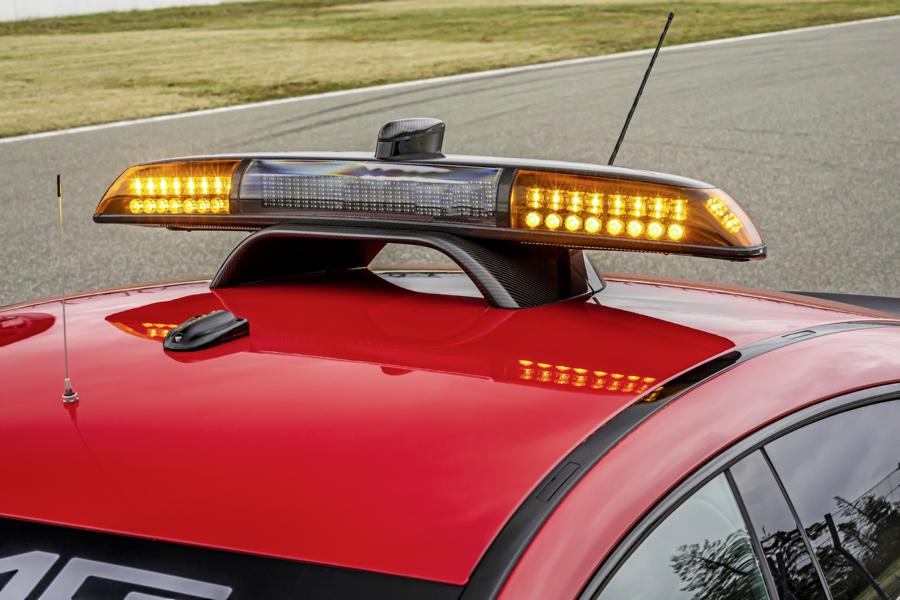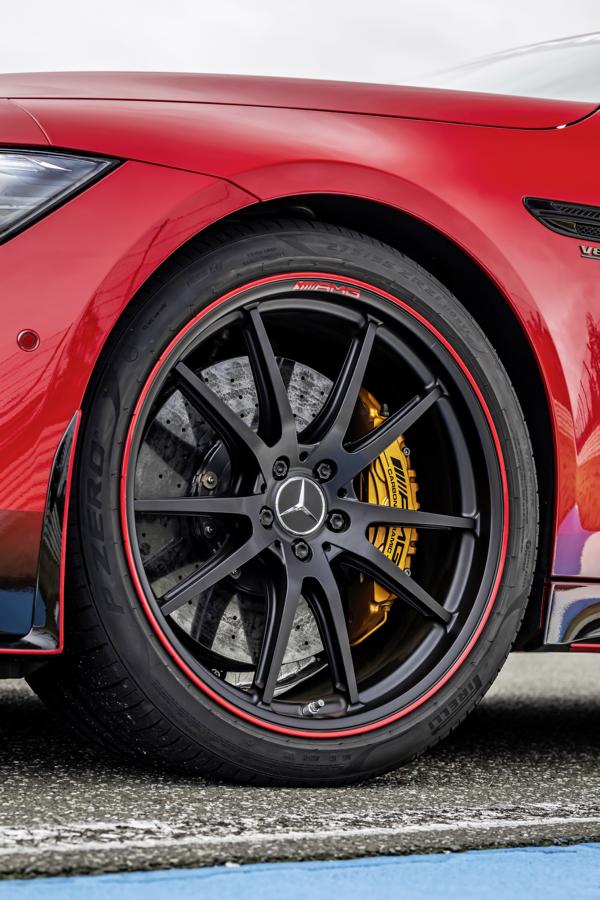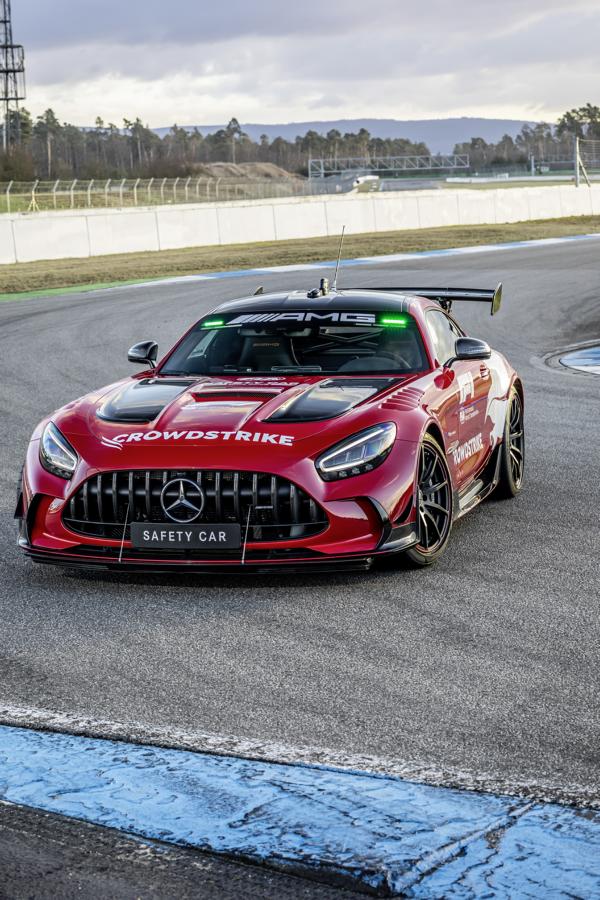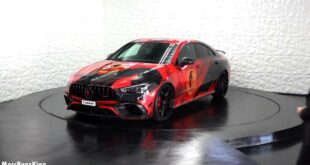With two exceptional performance models that have already sufficiently proven their suitability for the race track, Mercedes-AMG will contribute to the high level of safety in the FIA Formula 18 World Championship™ at the FORMULA 20 GULF AIR BAHRAIN GRAND PRIX 1 from the season opener from March 2022th to 1th . The Mercedes‑AMG GT Black Series will be used for the first time as the Official F1® Safety Car. The Mercedes-AMG GT 63 S 4MATIC+ celebrates its debut as Official F1® Medical Car. These vehicles have never been as powerful as they are in the 2022 season.
Safety Car and Medical Car
“Mercedes‑AMG has celebrated numerous great successes in the Formula 1 World Championship in recent years. Eight constructors' and seven drivers' titles in the past eight years speak for themselves. Added to this is the extensive technology and image transfer between this highest motorsport stage and our production vehicles. Motor sport is close to our hearts and in this context, of course, the necessary safety. It is a matter of course for us that we are extending our commitment as a supplier of the safety car and the medical car after more than 25 years - and with two outstanding vehicles from our portfolio," explains Philipp Schiemer, Chairman of the Board of Management of Mercedes‑AMG GmbH .
"Since 1996, and thus for more than a quarter of a century, Mercedes-AMG has continuously provided the vehicles that are needed in Formula 1 in emergency situations. Since then, our performance vehicles have been guiding the Formula 1 field safely around the course as the Official F1 Safety Car when bad weather conditions or incidents make it necessary. Our Official F1 Medical Car is there as quickly as possible when it is needed. To ensure this, we have done even more for the 2022 season and are launching the most powerful models to date with the AMG GT Black Series and the AMG GT 63 S. In addition, their on-track performance is closer to that of a thoroughbred racing car than any of their predecessors. As always, I naturally hope that both vehicles will have to be used as little as possible,” says Christoph Sagemüller, Head of Motorsport at Mercedes‑AMG GmbH.
Bernd Mayländer, driver of the Official Safety Car of the FIA Formula 2000 World Championship™ since 1, says: “I am very happy that I will be behind the wheel of the Formula 2022 Safety Car again in the 1 season. And I am particularly pleased that this year it is also a Mercedes‑AMG GT Black Series. I've been able to test this extraordinary vehicle many times and I'm simply amazed at how close it is to a thoroughbred racing car. That's really another significant step compared to last year's GT R - which was also at an extremely high level. Such a job in terms of security is just a dream.”
Safety car signal lights seamlessly integrated into the vehicle for the first time
Both emergency vehicles are technically standard as far as possible, but have received extensive measures for the special tasks on the route. The most striking feature of the Official F1® Safety Car is the absence of the previously known signal bar on the roof. This would have disrupted the sophisticated aerobalance of the AMG GT Black Series. The developers in Affalterbach therefore came up with something completely new: the obligatory signal lights are integrated into the upper part of the windshield. At the rear, the lights have been elegantly integrated into the rear wing. Fast-reacting and economical LEDs take over all signal functions.
Front modules at the height of the sun visors
At the front, three small orange light modules and one large green module are positioned to the right and left of the AMG logo at the height of the sun visors. The rear wing has 13 orange lights in the upper main blade: three on the left and three on the right with a permanent light. There are also seven in the middle as flashlights that flash when needed. There are also four wider, green LED light modules. Two tiny video cameras are installed in the right wing root, the images from which are transmitted to the interior. One camera serves as an electronic rear-view mirror for the front passenger (small monitor on the headliner to the right of the conventional interior mirror), the other transmits a live TV image. As a service for spectators in the stands, there is also a light module in each of the rear side windows, which when in use displays “SC” (for Safety Car) in orange.
The functions of the safety lights at a glance:
- Orange: As soon as the safety car is deployed, the orange LEDs are switched on. The orange flashing light in the middle section at the rear and a permanent light at the outer ends in front means "absolutely no overtaking."
- Green: Should the AMG GT Black Series line up in the middle of the field at the beginning of a safety car phase, the green modules on the front and rear are switched on. This is the signal for all racing drivers to overtake the safety car.
- All modules can be continuously dimmed in order to be able to adapt the light intensity to the general conditions, for example during night races under floodlights or in very strong sunlight during the day.
The illuminated rear license plate also shines in orange or green to match the safety lights. The headlights and taillights have another important signaling function: whenever the safety car is on the route, they use impulse flashing to attract additional attention.
Standard interior with AMG Track Package
The interior of the Official F1® Safety Car corresponds to the standard AMG GT Black Series with the optional track package including rollover protection. The bolted, lightweight tubular titanium cage of the rollover protection system consists of a main bar, a belt attachment strut, two rear struts and a diagonal rear cross. The system further increases the already excellent vehicle rigidity and thus has a positive influence on the vehicle's driving dynamics. It also increases passive safety.
Additional monitors for route observation
The only new features are the six-point seat belts prescribed by the FIA (Fédération Internationale de l'Automobile) and two tablets in the center console and in the instrument panel in front of the passenger seat. They are used by co-pilot Richard Darker to monitor the Formula 1® field. The international TV signal can be seen on the display of the left tablet in the center console. The right-hand monitor can display either the animated display with the current position of the racing cars on the track or the current lap times. An in-car hotspot with a WLAN radio network handles the data management for the visual communication solutions. While Bernd Mayländer has to concentrate on the track and at the same time observe what is happening in the rear-view mirror, Richard Darker is in radio contact with the race control. In the center console there are two red buttons for controlling all radio commands and two rotary controls for adjusting the volume. Mayländer and Darker also communicate with each other via radio-based intercom. A second radio system is integrated in the cockpit as a backup solution for emergencies.
The lightweight racing bucket seats are part of the track package, which any customer can also order. In the Official F1® Safety Car, however, the side rests are each equipped with a small cup holder on the outside to hold a water bottle. The light signals are controlled via a control panel in the front roof area, with round, colour-coordinated illuminated pushbuttons ensuring precise switching even when wearing racing gloves.
Identical FIA specific systems as in the Formula 1® racing cars
In addition, various FIA-specific systems, which are also present in every Formula 1® racing car, are installed - such as the transponder system for timekeeping, the high-resolution GPS and the standard telemetry. The "Marshalling System" is also installed: it uses three colored LEDs in the instrument cluster and in the passenger area to display the flag signals for the respective route section. There is also the so-called "Medical Warning Light". If an accident occurs on the route in which a critical G-force threshold is exceeded, the LEDs will flash several times. In this way, Bernd Mayländer and Richard Darker can prepare themselves even better for an upcoming assignment.
Developed specifically for demanding race track use
High cornering speeds, dynamic intermediate sprints and fast lap times – the FIA's requirement profile for the safety car is demanding. After all, it is important to guide the racing cars from the top class of motorsport safely around the course in extreme situations. The safety car must not drive too slowly, so that the tires and brakes of the Formula 1® vehicles do not cool down too much and the engines do not overheat. The AMG GT Black Series has the ideal prerequisites for the tough job in the pinnacle of motorsport. The front mid-engine concept with transaxle, the V8 biturbo engine with dry sump lubrication, the double clutch transmission and the highly developed chassis with aluminum double wishbone axles create the basis for fast laps on the race track. The intelligent material mix lightweight construction not only guarantees a low vehicle weight, but also a low vehicle center of gravity and an advantageous weight distribution.
No current AMG model with road approval is closer to motorsport
The top model of the two-door AMG GT series was equipped with an output of 537 kW (730 hp), the reinforced body shell and the new, multi-adjustable chassis. Intelligent lightweight construction measures and active aerodynamics were specifically developed for use on the race track. There is currently no street-legal AMG model that is closer to motorsport. This applies to the AMG SPEEDSHIFT DCT 7G dual-clutch transmission, the twin-pipe exhaust system made of thin-walled stainless steel with a titanium rear silencer and the chassis: Its height can be adjusted manually and it has adaptive adjustable damping, which can be pre-adjusted in three stages. The camber on the front and rear axles can be individually adjusted, as can the setting of the anti-roll bars. Additional joint bearings on the wishbones of the rear axle, carbon thrust fields and specially tuned, electronically controlled engine and transmission mounts also contribute to the increased driving dynamics.
Chassis set-up, brakes and aerodynamics equipped for the highest demands
For the Official F1® Safety Car, the Affalterbach suspension specialists have developed a set-up in conjunction with the Pirelli P Zero tires that is ideal for all racetracks and all weather conditions. The standard AMG ceramic high-performance composite brake system remains the same as that of the AMG GT Black Series. This also applies to the sophisticated aerodynamics with a large front apron, additional flaps, a larger front splitter and the vertical airflow edge on the rear apron. Together with the double-decker rear wing with an additional, electronically controlled flap, the aerodynamics ensure optimum downforce and balance in the AMG GT Black Series. The driving performance is more than sufficient for this: the production version of the Mercedes-AMG GT Black Series completes the sprint from zero to 100 km/h in 3,2 seconds, and the top speed is only reached at 325 km/h.
Mercedes‑AMG GT 63 S 4MATIC+ new Official F1® Medical Car
The Mercedes‑AMG GT 63 S 4MATIC+ is making its Formula 1® debut as the second official car – and replaces the predecessor C 63 S AMG T model (combined fuel consumption: 10,8 l/100 km, CO2Emissions combined: 246 g / km)1 away. The new Official F1® Medical Car is ready for rapid emergency care and is manned by up to three medics, including Dr. Ian Roberts, FIA Medical Rescue Coordinator. One or two local doctors take a seat in the rear – they come from a special clinic near the respective racetrack. The Medical Car follows the Formula 1® field on the starting lap because the racing cars are particularly close together in this critical phase of the race. In the event of an incident, the doctors can reach the scene of the accident as quickly as possible and start providing first aid immediately. During the race, the Official F1® Medical Car is on stand-by next to the safety car in the pit lane.
The strongest and fastest medical car in Formula 1® history
In order not to lose any time during emergency operations, the Official F1® Medical Car impresses with maximum racetrack performance: The 4,0-liter V8 biturbo engine offers a maximum output of 470 kW (639 hp) and accelerates the four-door coupé in standard trim from zero to 100 km/h in 3,2 seconds. The top speed is reached at 315 km/h. As with the Safety Car, the V8 engine, AMG SPEEDSHIFT MCT 9G transmission, dynamic engine mounts and electronic rear axle locking differential are on the same level as the road version. Another advantage over the C 63 S with rear-wheel drive is the fully variable AMG Performance 4MATIC+ all-wheel drive. Even in adverse weather conditions and continuous rain, this guarantees optimal traction and maximum driving safety. The medical car's AMG RIDE CONTROL+ suspension, which comes as standard, offers the perfect set-up for rapid use on the race track with three to four occupants and the emergency equipment on board. Deceleration is also provided by an AMG ceramic high-performance composite brake system.
Aerodynamically optimized carbon scoop on the roof
From a visual point of view, the medical car differs from the production vehicle primarily through the distinctive FIA and F1® logos and the light bar on the roof. It is placed on a carbon scoop, which is designed in such a way that the airstream has as little contact surface as possible. At the same time, it ensures an aerodynamically optimal flow of air onto the fixed rear wing. The arrangement and design of the carbon scoop and light bar were determined in extensive wind tunnel tests. The blade of the rear wing is fixed in the steepest position to generate maximum downforce. The optional aerodynamics package is identical to that of the road vehicle and is available to every customer. On the other hand, headlights and taillights with a signal function and the illuminated rear number plate with Medical Car lettering are further differences compared to the production vehicle. The complete emergency equipment including defibrillator, respirator, rescue scissors and two hand-held fire extinguishers are safely stowed in the spacious trunk. When the tailgate is open, additional flashlights warn the passing field of racing cars.
Interior with special racetrack equipment: tablets, WiFi and racing bucket seats
Four individual racing bucket seats, including six-point belts on the front seats and four-point belts on the rear seats, ensure that the emergency services are held perfectly, even at top speed. For maximum safety, the seat consoles are welded into the car floor. The FIA switch unit corresponds to the equipment of the safety car, but is placed in the center console. Radio equipment is used to communicate with the race control. Three tablets and an additional monitor for the electronic rear-view mirror on the instrument panel on the passenger side are installed to monitor the racing action. Like the safety car, the medical car also has an in-car hotspot and a WLAN radio network. All Formula 1® racers wear special gloves that are equipped with vital sensors on the little finger. In the event of an emergency, the doctors in the medical car can receive the current heart rate or blood oxygen saturation values of the casualty via radio in real time on one of the screens. In this way, the first-aid measures can be coordinated effectively and in a targeted manner.
Striking red paintwork with black contrasting elements and white decor
In the 2022 season, too, the Mercedes-AMG Official F1® Safety Car and the Official F1® Medical Car will start with the striking red paintwork of the previous year: the strong color not only corresponds to the world of Mercedes-AMG, but also to CrowdStrike, who like appears as Official F2021® Safety Car Sponsor in the 1 season with large white lettering and logos. CrowdStrike has been a partner of the Mercedes‑AMG Petronas F2019 Team since 1. CrowdStrike has redefined online security with the world's most advanced cloud-native platform, protecting the people, processes and technology that power modern businesses. CrowdStrike secures the most critical areas of business risk so its customers stay ahead of today's cyber threats. The color red is emblematic of CrowdStrike's promise to stop security breaches. The cooperation with one of the global market leaders for cybersecurity is being expanded with the striking look of the safety car.
The Medical Car, on the other hand, bears the emblems of the FIA Formula 1 World Championship™ and an AMG logo integrated in the lower area of the doors. In both models, the aerodynamic add-on elements and the lower vehicle area are completely black. They also roll on black AMG light-alloy wheels with red rims. During the race weekends, the safety vehicles not only guarantee maximum safety in Formula 1®, but also in all supporting races. Three highly qualified AMG technicians oversee the use of the vehicles throughout the season. As in the previous year, Mercedes-AMG shares the demanding safety tasks of the safety car and medical car with the British sports car manufacturer Aston Martin. Both brands maintain a far-reaching technology cooperation, among other things, Mercedes-AMG supplies its eight-cylinder biturbo engines to the British.
Don't worry, of course that was far from being the case when it came to auto / auto tuning. Our magazine still has tens of thousands other tuning reports in stock. Do you want to see them all? Then just click HERE and look around. Or are you particularly interested in everything to do with vehicles from the brand Mercedes-Benz? Then the following excerpt is for sure just the right thing.
|
Without a green thumb: Mercedes-AMG GT 63 SE Performance special edition! |
New Official FIA Safety Car and Medical Car from Mercedes AMG for Formula 1®
Photo credit: Mercedes-Benz
tuningblog.eu - on the subject of cars, motorcycles, bikes / ATV / scooters & Co., and of course our passion, the Tuning, we keep you up to date and report daily on cool vehicles from all over the world. It's best to subscribe to ours Feed and you will be automatically informed as soon as there is a new post.
 tuningblog.eu Your magazine about tuning the car
tuningblog.eu Your magazine about tuning the car
